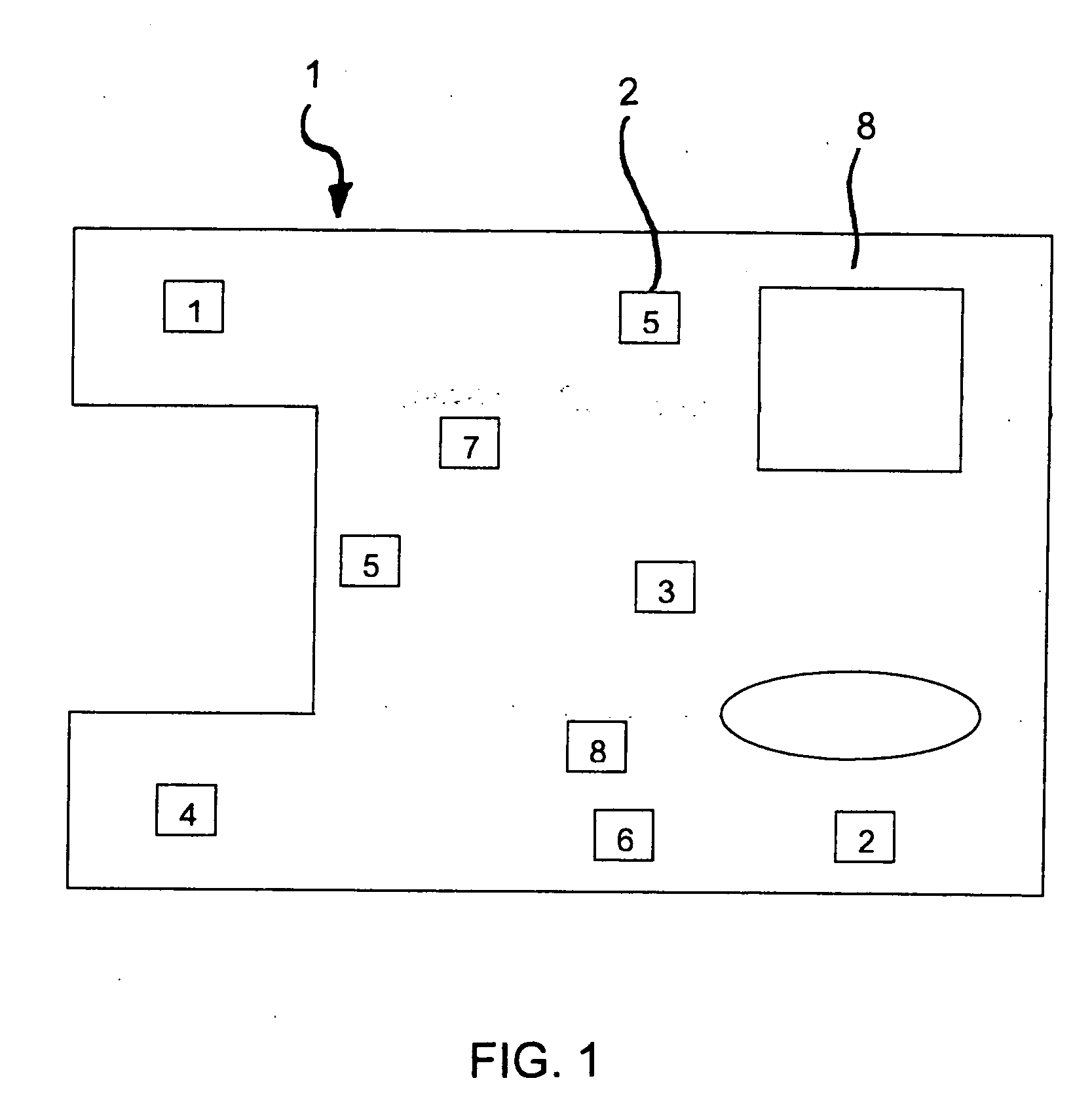Method for producing three-dimensional sintered work pieces
a three-dimensional sintered work and work piece technology, applied in the direction of additive manufacturing process, electric/magnetic/electromagnetic heating, coating, etc., can solve problems such as work piece destruction, and achieve the effect of reliably avoiding work piece distortion
- Summary
- Abstract
- Description
- Claims
- Application Information
AI Technical Summary
Benefits of technology
Problems solved by technology
Method used
Image
Examples
Embodiment Construction
[0027] Referring now to the figures of the drawing in detail and first, particularly, to FIG. 1 thereof, there is shown a method according to the invention for producing three-dimensional sintered work pieces 1, which in particular is a stereolithography method for use in an automated laser sintering unit. First, a sintering material is applied to a substrate in layers 8 from a storage device. The sintering material may be liquid, pasty, pulverulent or granular. Then, the sintering material is heated by regional irradiation of defined individual sections 2, in such a manner that the constituents of the sintering material, with complete or at least partial melting, are joined to one another as a function of irradiation regions to form the work piece 1.
[0028] As can be seen from the plan view of the work piece 1 shown in FIG. 1, the individual sections 2 which are irradiated successively in terms of time are at a distance from one another that is greater than or at least equal to a m...
PUM
| Property | Measurement | Unit |
|---|---|---|
| Length | aaaaa | aaaaa |
| Time | aaaaa | aaaaa |
| Diameter | aaaaa | aaaaa |
Abstract
Description
Claims
Application Information
 Login to View More
Login to View More - R&D
- Intellectual Property
- Life Sciences
- Materials
- Tech Scout
- Unparalleled Data Quality
- Higher Quality Content
- 60% Fewer Hallucinations
Browse by: Latest US Patents, China's latest patents, Technical Efficacy Thesaurus, Application Domain, Technology Topic, Popular Technical Reports.
© 2025 PatSnap. All rights reserved.Legal|Privacy policy|Modern Slavery Act Transparency Statement|Sitemap|About US| Contact US: help@patsnap.com



